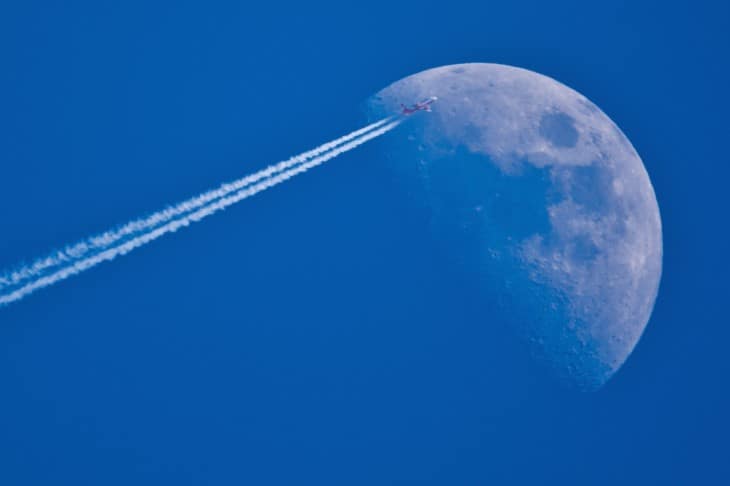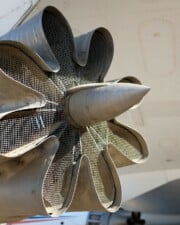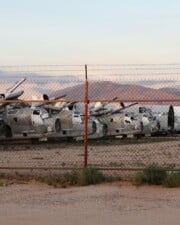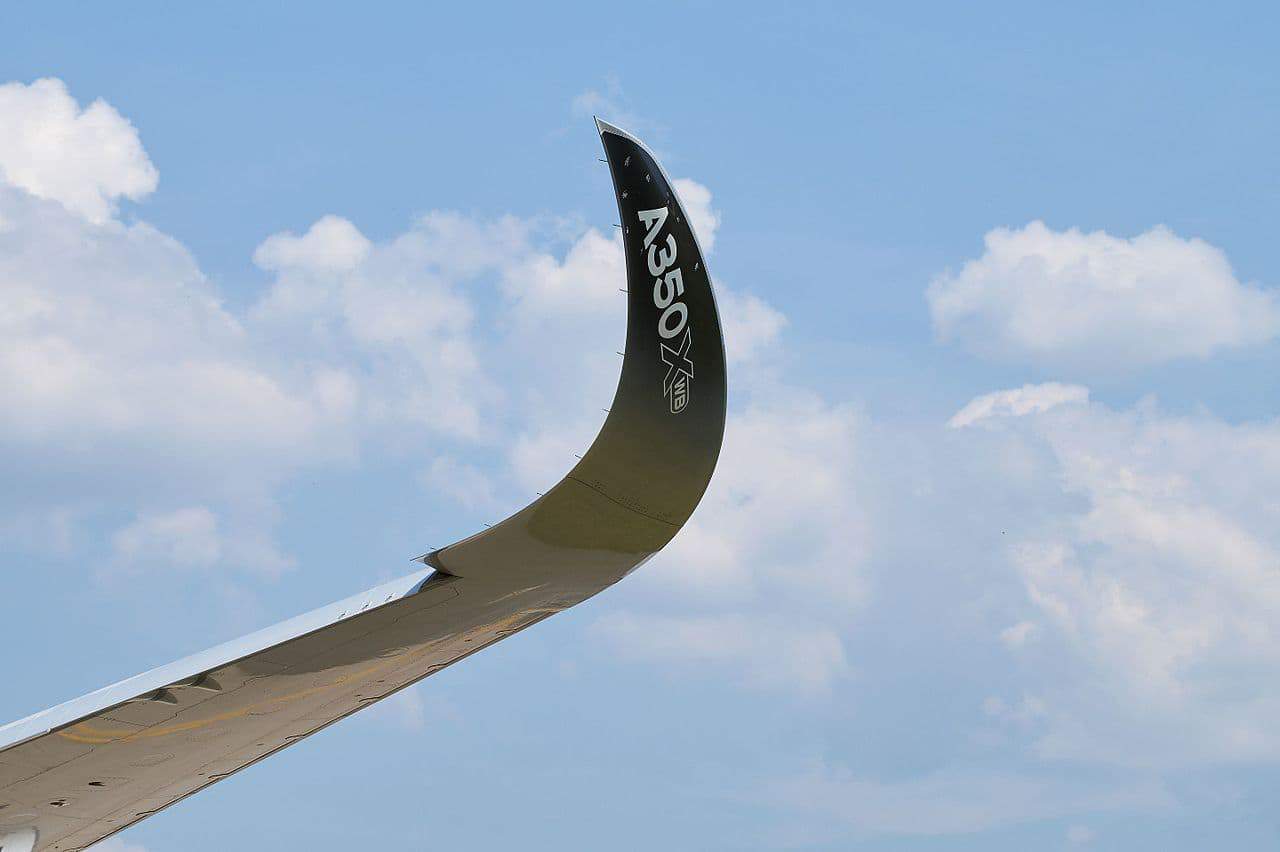With so many commercial jets flying routes all over the world, there probably isn’t a person on Earth who hasn’t noticed the white smoke coming from airliners. But why do these streaks only occur behind some planes? Are they dumping fuel? Is it hazardous? What exactly are these vapor trails?
Why Planes Leave Trails
When flying at high altitudes, jet engines exhaust extremely hot air and water vapor, among other things. The cold temperatures and low pressures at these altitudes result in the water forming into visible ice crystals. The results are white clouds known as contrails, which is short for condensation trails.
The Science Behind Contrails
There are three components necessary for clouds to form in the atmosphere.
- There must be moisture present in the form of water vapor.
- The atmosphere must cool enough for that water vapor to condense into visible moisture (either as water droplets or ice crystals).
- There must be some form of condensation nuclei. The nuclei can be any bit of particulate in the atmosphere, like dust or pollution, that water molecules can hold onto.
Most clouds you see are the result of moist warm air rising. As it gets higher, the air cools down to the temperature of the surrounding air. When it reaches the dew point, a visible cloud forms.
Condensation trails behind aircraft are simply clouds. All three components are created, and when conditions are just right, these contrails will appear behind every plane in that part of the sky.
Jet engines produce an incredible amount of heat, along with water vapor and other combustion exhaust particles like carbon dioxide. This exhaust is shot out the back of the jet engine into the surrounding cold air.
The atmosphere at high altitudes is frigid. Most airliners fly between 30,000 and 38,000 feet above sea level, where the temperatures range between -45 and -61 degrees Celsius.
At these temperatures, the water vapor will condense into water droplets, which will become ice crystals quickly. Like the upper-level cirrus clouds at these altitudes, the ice crystals will blow and scatter with the wind conditions. If the upper-level winds are calm, the contrails may remain intact for a long time.
While it is true that the contrails contain pollutants, just as all combustion engines leave pollutants when operating, the contrails are not made of smoke, visible pollution, or chemicals. They are clouds just like natural cirrus clouds, made of ice crystals suspended in the atmosphere.
Why Don’t All Planes Leave White Smoke?
A specific set of atmospheric circumstances have to line up to create an exhaust contrail. It’s seldom cold enough at lower altitudes for this to happen, so the primary place they occur happens to be at the cruising altitude of jets.
You aren’t likely to see contrails behind propeller-driven aircraft or low-flying planes. It’s also why the presence of contrails varies from day to day, depending on the weather conditions present in the upper atmosphere.
Classifications of Exhaust Contrails
NASA’s Langley Research Center has studied contrails and their effects for decades. They divide contrails up based on how persistent they are in the atmosphere. Contrails are ranked as short-lived, persistent, and persistent-spreading.
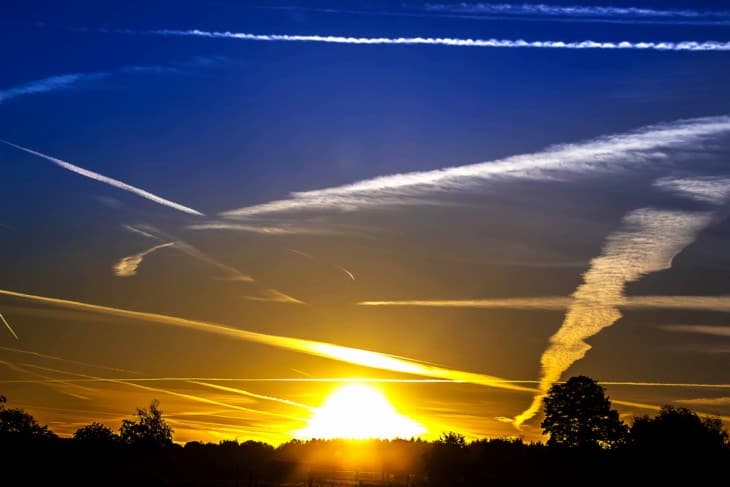
Aerodynamic Contrails
The process described above is known as an exhaust contrail since it is formed behind the engines. But the wings and control surfaces can cause a similar phenomenon, known as aerodynamic contrails.
Aerodynamic contrails are more likely to be visible near the surface in areas with a lot of moisture already in the atmosphere. When riding in a plane and looking out the window, you may see clouds form on top of the wing or in the vortices trailing behind it. They tend to happen quickly as the plane travels between different levels in the atmosphere.
As the air over the top of the wing accelerates, it also cools. If there’s enough water vapor in the atmosphere and the temperatures are close to the dew point, this cooling is enough to create a cloud.
These clouds take several forms, depending on how the aircraft is configured. In some cases, a smooth cloud forms perfectly over the wings of the plane. In other cases, the accelerated air flowing behind the air in the wingtip vortices creates a cloud.

Since the cloud shows the area of lower pressure over the wing, it changes as the pilot controls the lift made by that wing. As the pilot changes the wing’s angle of attack, the aerodynamic contrails may grow larger or dissipate.
These contrails are especially neat to see since they visually show where the lift is being generated and where the wake turbulence lies. It’s a physical and visual manifestation of something you usually only learn about theoretically.
Any aircraft can leave aerodynamic contrails. They can form at any altitude as long as the atmospheric conditions are just right. They’re even often seen on the nose cones of rockets on liftoff!
Conspiracy Theories
Aviation, by its very nature, is a technical subject that involves a lot of science and technical jargon. Sometimes, when the non-flying public is unaware of the science behind it, conspiracy theories can pop up.
Why Do Planes Dump Fuel?
Some people believe that the white trails behind aircraft are fuel because they’ve heard of pilots “dumping fuel” in the movies.
Some aircraft are indeed equipped to be able to dump their jet fuel overboard. This is an emergency procedure designed to reduce the landing weight of an airplane.
Transport aircraft are often designed to take off at much higher weights than they can land. Since under normal conditions, the plane will burn thousands of pounds of fuel between its departure and destination, the plane will be well within limits before landing.
But what about in the case of an emergency, can the plane land safely if something goes wrong right after takeoff? In some cases, the answer is no. The fuel needs to be burned off by remaining in the air or dumped overboard to enable the plane to land immediately.
Dumping of fuel is extremely rare and carefully controlled. It would only happen over unpopulated areas, and remaining aloft until a safe landing can be accomplished is always the preferable solution.
The vapor trails left by a plane at altitude have nothing to do with dumping fuel.
“Chemtrails”
Another popular conspiracy theory is that aircraft are being used by the world’s governments to disperse chemicals into the atmosphere. This theory has resulted in the term “chemtrails,” which is becoming more and more common.
Some believe they are related to a secret government atmospheric control program involving cloud seeding and weather manipulation.
Effects of Contrails on Climate
One area of valid research and study has been done on whether or not the presence of contrails in the atmosphere affects the climate.
Several hypotheses have been floated that the contrails, by increasing the amount and coverage of upper-level clouds, reduce sunlight penetration to the surface. Theoretically, this could reduce surface temperatures. But they also trap in heat, so research needed to be done to find out whether the clouds have a net warming or cooling effect.
NASA has studied the effects carefully, and the results show a minor net warming effect. Observationally, they’ve shown that warming is more pronounced in areas with the most flight activity, like over the North Atlantic flight corridor between America and Europe.
Related Posts
